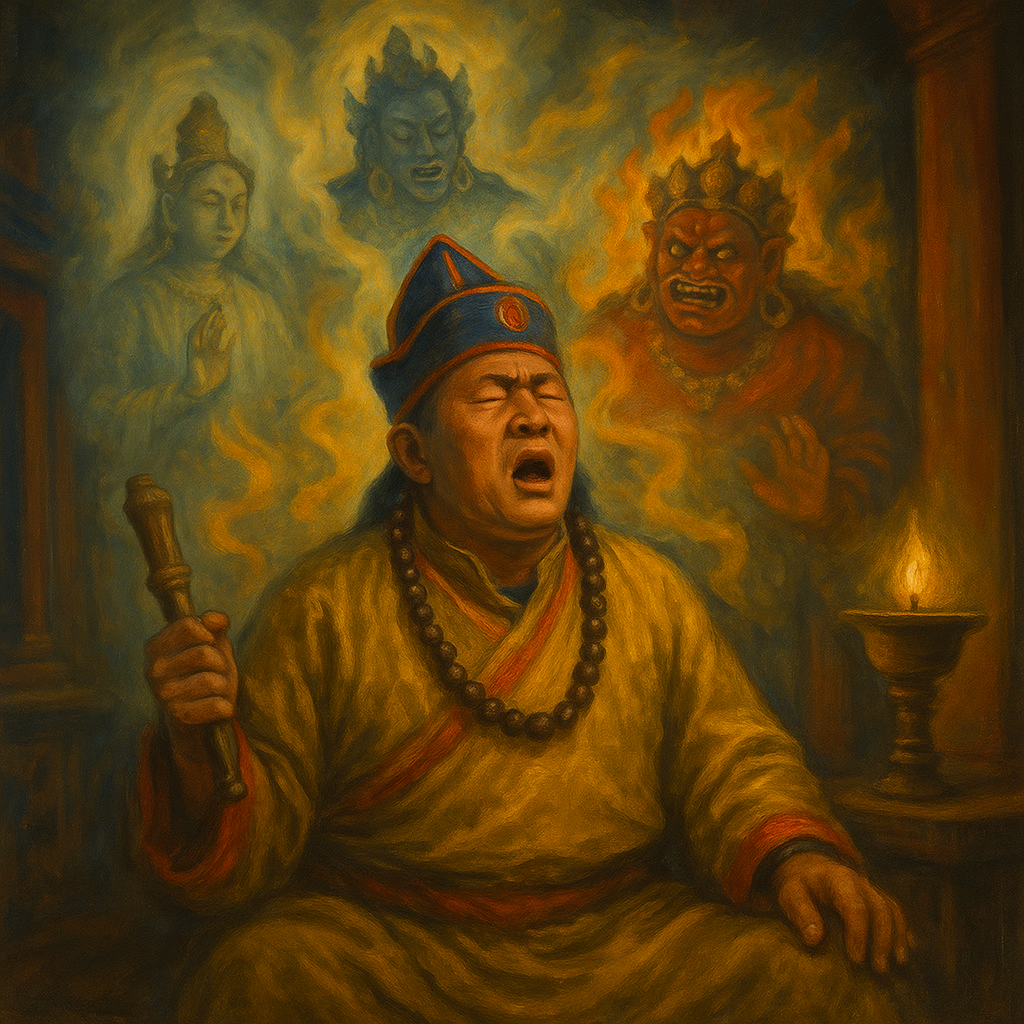Tibetan Beliefs in Spirit Communication, Mediumship, and Spiritual Dimensions
Introduction
Tibetan spirituality—shaped by a blend of Bön (the ancient indigenous religion) and Tibetan Buddhism—offers a profound view of reality as layered with visible and invisible realms. Within this worldview, spirit communication and mediumship are not marginal practices but integral to healing, protection, and guidance. Tibetan traditions describe a cosmos alive with deities, protectors, ancestors, and wandering spirits, all of whom may interact with humans through ritual and trance.
The Tibetan Cosmology: Multiple Spiritual Dimensions
Tibetan belief recognizes a multi-dimensional universe where humans coexist with spirits and deities. Key realms include:
Human World (Loka): The realm of everyday existence, deeply influenced by unseen forces.
Spirit Realms: Populated by local deities, nature spirits, and wandering ghosts.
Deva Realms: Higher dimensions inhabited by gods and enlightened beings.
Bardo (Intermediate State): The dimension between death and rebirth, where consciousness journeys and can communicate with the living through visions or omens.
Hell Realms: Dimensions of suffering, linked to karmic purification.
This cosmology makes spirit communication a natural aspect of Tibetan religious life.
Spirit Communication in Tibetan Traditions
1. The Bön Legacy
Before Buddhism arrived, the Bön tradition emphasized shamans, divination, and mediumship.
Practitioners entered trance states to communicate with mountain gods, elemental beings, and ancestral spirits.
Rituals balanced harmony between humans and the natural-spiritual environment.
2. Oracles and Spirit Mediums
Tibetan Buddhism preserved and transformed Bön practices, institutionalizing oracles (lha pa or sku rten) as recognized mediums.
Oracles enter trance and allow deities or protector spirits to speak through them, delivering guidance for communities, monasteries, or even the Dalai Lama.
The Nechung Oracle, official state oracle of Tibet, is one of the most famous examples of institutionalized mediumship.
3. Ancestor and Spirit Rituals
Ritual specialists conduct ceremonies to appease hungry ghosts (preta) or restless ancestors.
Families make offerings to ensure peace for the deceased and prevent spirit disturbances.
Communication often occurs through omens, dreams, or trance messages conveyed by mediums.
Techniques of Spirit Contact
Tibetan spiritual practices use diverse methods to bridge dimensions:
Trance and Possession: Mediums enter deep altered states, allowing deities or spirits to embody them.
Chöd Rituals: Practitioners visualize offering their body to spirits, transforming fear into liberation and communication.
Divination (Mo): Oracles and lamas use dice, astrological charts, or symbolic tools to receive guidance from spirits.
Mantras and Ritual Objects: Sacred chants, bells, and drums alter consciousness and invoke deities.
Dream Yoga: Advanced practitioners intentionally use dreams to travel spiritual dimensions and contact beings.
Entities in Tibetan Spirit Communication
Tibetan spirituality recognizes many beings that mediums may encounter:
Dharmapalas (Protector Deities): Fierce guardian beings who safeguard Buddhist teachings.
Lha (Gods/Spirits): Divine entities connected to mountains, rivers, and skies.
Pretas (Hungry Ghosts): Restless spirits driven by desire and suffering, often appeased in rituals.
Ancestral Spirits: Deceased family members who influence the wellbeing of the living.
Wrathful Deities: Often enlightened beings appearing in fierce forms to break through obstacles.
Comparisons with Western Mediumship
Shared Features: Trance, possession, ancestral communication, spirit healing, and prophecy.
Differences: Tibetan mediumship is not primarily evidential; it is ritualized and institutional, often serving entire communities or states rather than individuals. Communication is directed toward protection, guidance, and karmic balance, not proof of afterlife survival.
Continuity and Modern Practice
Despite exile and modern pressures, Tibetan practices of spirit communication continue:
Nechung Oracle still advises the Tibetan government-in-exile.
Monasteries across India, Nepal, and Tibet-in-exile perform spirit appeasement rituals.
Lay healers and mediums in Himalayan villages continue trance communication with local deities.
Western interest in Tibetan dream yoga and bardo teachings highlights the global appeal of Tibetan multidimensional spirituality.
Conclusion
Tibetan beliefs in spirit communication, mediumship, and spiritual dimensions reveal a universe where humans, spirits, and deities exist in constant relationship. Through trance, oracle traditions, bardo teachings, and rituals of appeasement, Tibetans maintain a structured dialogue with the unseen world.
Unlike Western mediumship, which often emphasizes individual survival evidence, Tibetan spirit communication focuses on protection, karmic alignment, and collective wellbeing. It remains one of the most elaborate and institutionalized systems of mediumship in the world.

